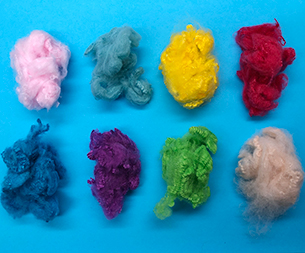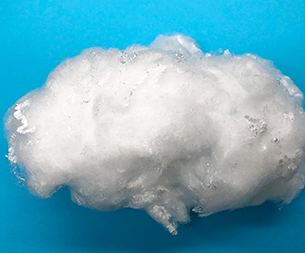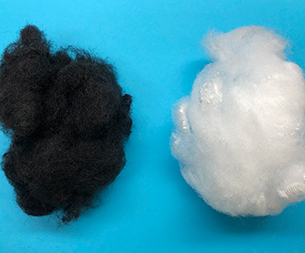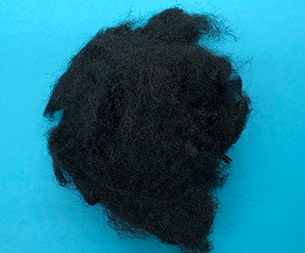Since the beginning of this year, due to the impact of the new crown epidemic, the global demand for textile and apparel has declined sharply, and the textile market has suffered a severe decline. The volume and price of products have fallen, and it is difficult for the weaving manufacturers to produce and sell, which has led to rising inventories. The lack of orders for weaving companies began to reduce the start of operation, and the demand for raw polyester yarns was further reduced.
In the case of sluggish production and sales and increased inventories, polyester factories should start to reduce burden and reduce production. Recently, although 13 companies have implemented production limit pricing, in terms of scale, the volume of these 13 companies' production limit pricing is actually not large. Large factories like Hengli have not yet been added, and Shenghong has limited production. It is just polyester chips, the scale is relatively general, so the operation rate of polyester factories is still relatively stable.
"Inverted pyramid" industrial model
As we all know, the textile industry chain is an "inverted pyramid" model. Terminal clothing largely determines the market price of the upstream market, and the market of terminal clothing can actually be seen from the dyeing factory. All fabrics must pass through the dyeing plant. Now, the start-up rate of the dyeing plant is only about 55%, which is the lowest operating rate in the industry chain.
As for clothing, the impact of the epidemic has become more obvious. Recently, many well-known clothing companies have closed down. The most popular one is Brooks Brothers, which announced the closure. This clothing is known as "the special clothing for the presidential inauguration." The brand, 40 of the 45 presidents in the United States, all wore the brand’s suits at the inauguration, including Theodore Roosevelt, Kennedy, Ford, George Bush, and Clinton; the two US presidents in recent years, Trump and Obama is no exception. The brand fame even attracted former French President Chirac to buy shirts in stores in the United States.
Brooks Brothers is only a representative one of the apparel companies, but it can also confirm from the side that this year's apparel market prospects are indeed worrying. If the piece of clothing doesn't work, then the dyeing plant's operation rate will naturally be difficult to increase.
The block of the dyeing factory is blocked, indicating that the terminal demand cannot rise, and the trade is not ideal. What is the consequence of being pushed down from the bottom?
The upstream collapsed one by one!
Weaving manufacturers bear the brunt
Weaving is already obvious. Manufacturers' inventory has soared to the highest level in recent years. According to the statistics of China Silk Capital, the inventory of grey cloth in Shengze area has risen to around 45 days, at a high level of nearly 4 years. At the same time, most grey cloths have significant price pressures on profits, and price losses are common when goods are thrown away. At present, it has entered the traditional low season, and it is more difficult for manufacturers to take orders. From the perspective of visiting the market, many weaving manufacturers are currently doing inventory. If the market continues to weaken, further reductions in construction will be a high probability event.
Then there is the polyester manufacturer
At present, polyester manufacturers have been in a cumulative inventory cycle, and the inventory is at a high level since April. With the possibility of further decline in the start-up rate of downstream weaving manufacturers, it is difficult to make production and sales even, and even continuous polyester yarn promotional offers, There are very few markets with more than 100 production and sales. It can be seen that the low polyester yarn price has been difficult for the weaving manufacturers to pay for. This year is also the year when polyester production capacity is concentrated. Many devices under construction are planned to be launched this year, with more than 2.7 million tons put into production in the first half of the year and more in the second half. When the device continues to be put into production, inventory continues to rise, but profits continue to suffer losses, once the terminal is blocked, the possibility of polyester manufacturers crashing is very high.
Then there are PTA manufacturers
Due to the sluggish downstream polyester market, the current PTA market is also difficult to reverse, prices are outside the low level, and inventories are constantly accumulating. Generally speaking, this period of time in previous years was the most frequent period for PTA maintenance, but this year, it has been postponed more than once, and many sets of devices have been put into production. Recently, another production line of the Hengli 5# 2.5 million ton PTA plant, which was put into operation at the end of June, began trial production, and Zhongtai restarted 1.2 million tons. It is expected that July output will remain at an upper level of 4.3 million tons, an increase of more than 30 from June. 10,000 tons, the supply side of PTA will expand again. At the same time, the profit of PTA is also not ideal. Under the suppression of difficult processing costs, the cash flow has shrunk significantly, and it is even in a dilemma. If the demand cannot keep up in the later stage, it will face high risks.
At present, it seems that weaving mills, polyester, and PTA are in a very saturated state and it is difficult to go to the warehouse. Once the most terminal link is blocked, the above links will face the risk of collapse. Especially polyester plants and PTA plants, with large production capacity and concentrated production capacity, will face greater risks than downstream links.
- Key Guide to Selecting Polypropy
- The impact of the Federal Reserv
- The core performance advantages
- China Textile Machinery: Driven
- The core applications of polypro
- Textile foreign trade has shifte
- How to choose the right polyprop
- Cross-border textile merchants a
- Optimization of Production proce
- What impact does the United Stat
- Markets
- Automotive Products
- Nonwoven Lining
- Geosynthetics
- Liquid Filtration
- Apparel and Textiles
- Hygiene Products
- Building and Construction
- Other Markets
- Contact Us
- Contact Haibang





